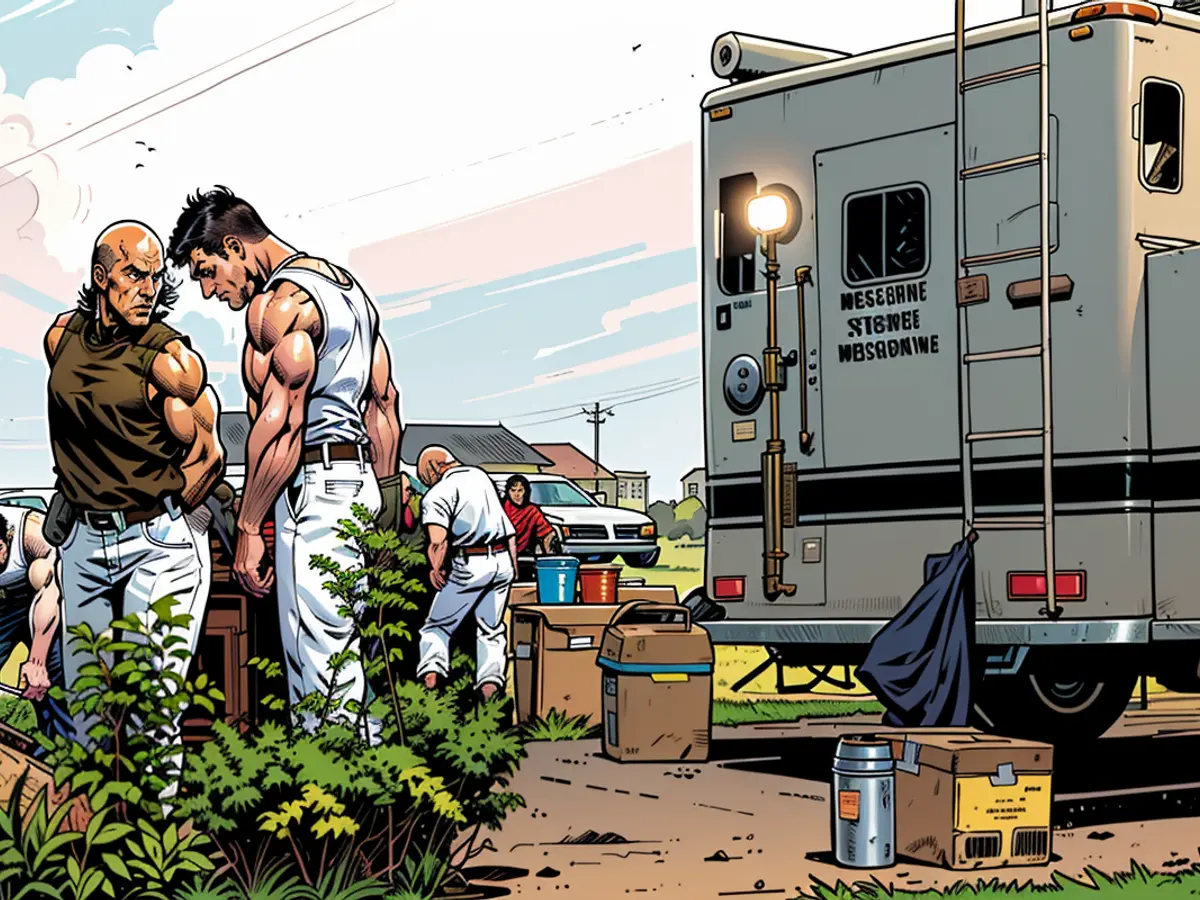The FBI increases its efforts to aid a group of individuals you ought not to overlook
Labeled "Operation Revive," this joint venture between the FBI and the US Bureau of Indian Affairs focuses on probing incidents of physical and sexual assault against children, investigating missing persons cases, handling domestic violence and homicide incidents in Native American communities.
Between June and September, this project led to the apprehension of 40 suspects, the accusation of 11 suspects involved in violent acts, and the extraction of 9 kids from abusive or negligent living situations, as announced by the FBI on a Wednesday briefing.
Now in its second year, this operation seeks to "grow and strengthen partnerships with both federal and tribal law enforcement forces; advance more cases through the judicial system – often in a more punctual fashion; and offer care, resources, justice, and, at times, closure for the victims and their families," as expressed by an FBI official in a meeting with journalists.
As an augmentation of resources, forensic teams have been examining crime scenes situated on tribal lands with the purpose of aiding investigations in these areas.
In one instance, authorities were alerted to a missing person by their family members, and later discovered the body in a field. Forensic experts scoured the scene for evidence and constructed a timeline of events, including an examination of the victim's last text messages.
FBI Special Agent Hailey Evans commented on the case in a video broadcast by the bureau, stating: "When you tackle something like this, you feel like you get to know the individual. You develop an intimate understanding of them. It truly instills a desire for justice within you."
Limited public awareness
Native Americans often experience some of the most substantial levels of violence in the United States, numerous studies have demonstrated.
Reportedly, more than 84% of American Indian and Alaska Native women and 82% of Native men have suffered violence in their lives, as per reports from the Justice Department.
Given the scarcity of public awareness, officials point out that "media coverage of these incidents is extremely limited."
"The capacity to publicize these cases has been an essential hurdle in making them known to the public." Michael Henderson, the Director of Criminal Investigations at the Navajo Nation Police Department, shared his thoughts with CNN in passing.
Darlene Gomez, an attorney in New Mexico who represents families of missing and murdered Indigenous individuals, stated that, "It seems law enforcement agencies in the Navajo Nation do not hold enough resources to investigate cases of missing and murdered Native Americans."
According to Gomez, some Native Americans reside far from police substations, with limited officer presence, making it challenging to process incidents or pursue leads. Furthermore, "a lack of trust in policing" exists because some Native Americans do not see law enforcement as a community representative.
'You are part of our community'
In addition to heightened resources to investigate violence-related crimes, numerous government entities and nonprofit organizations have stepped up efforts to increase public awareness about the thousands of missing Indigenous people in the nation. The hope is that these public awareness measures will lead to recoveries.
The FBI is harnessing its intelligence resources to create a comprehensive database for missing Native Americans, including photos, age, gender, and the last date of contact.
On a more local level, using social media, traditional news media, and direct community interaction, efforts have resulted in significant breakthroughs in investigations, authorities report.
For example, the state of Washington introduced the country's first public warning system for missing Indigenous individuals, resulting in the recovery of 101 of the 121 missing persons since its launch in July 2022.
The state’s system utilizes a range of communication resources such as text messages, emails, and electronic billboards to alert the public about missing Indigenous people, as well as help from the media to amplify public alerts.
In one case, a kidnapped young Indigenous girl was recovered after the suspect saw their description flash across a highway sign, causing them to stop and release the girl.
Loftis, Washington State Patrol director of communication, commented: "Our Native American neighbors are significantly more likely to be victims of crimes like assault, murder, and human trafficking. The increased law enforcement efforts to safeguard native people highlight that you are a vital part of our community, and we are a crucial component of yours. When one person goes missing, we all feel concerned."
Despite the alarmingly high rates of violence faced by Native Americans, media coverage of these incidents is sparse, often due to limited resources and a lack of public awareness. To address this issue, various government entities and nonprofits have undertaken efforts to increase public awareness about missing Indigenous people, utilizing social media, traditional news media, and community engagement.
Constantly reiterating the importance of these efforts, the FBI and other authorities stress that Native Americans are an integral part of their communities, and their safety is of utmost concern.








